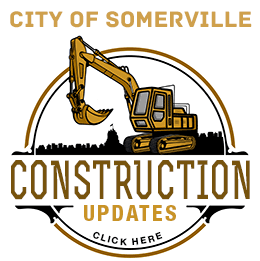At Assembly Square, a smart growth vision becomes a practical reality
Commentary By Joseph A. Curtatone
(The views and opinions expressed in the commentaries of The Somerville News belong solely to their and do not neccessarily reflect the views and opinions of the News, its publishers or editors.
April of 2006 will go into the history books as a month of milestones in the long, arduous effort to develop Assembly Square as a high-density, transit-oriented, mixed-used district that gives Somerville a major economic boost – and helps ease the future tax burden on our city’s hard-pressed residential taxpayers.
The first of these milestones came on April 8th, when The Sports Authority opened its doors to the public, thereby completing the re-tenanting of the old – and now fully renovated – Assembly Square Mall. The turnaround of the mall is not, as some have suggested, the end of the redevelopment plan for Assembly Square, but it is an important first step. Although the renovated mall doesn’t provide any obvious clues to the look and feel of future development at the site, what will happen next at Assembly Square – just as fast as Federal Realty Investment Trust emerges from its nearly finished environmental review process – is the creation of a new urban village alongside a riverfront park. The result will be a whole new neighborhood for Somerville, with housing, shops, restaurants, a hotel and its own stop on the Orange Line.
As that next phase of development takes shape, Assembly Square will no longer be defined by the mall. It will become far more than a place where people go to shop: it will be a place where people live, work and play. In fact, the completed renovation and re-occupancy of the old mall is probably the least important of the April 2006 milestones for Assembly Square. Still, it’s worth noting – and even cheering. After all, the mall is now home to several of our city’s most popular retailers, and their presence means hundreds of local jobs and well over $1 million in annual tax revenues. And, judging by the turnout of customers from across the city, the mall is already a huge success with the citizens of Somerville.
A second – and even more significant – milestone occurred that same week. As the mall prepared to celebrate its grand reopening, Doug Foy joined the City as an unpaid advisor on urban development plans and projects. His background as secretary of the state’s Office for Commonwealth Development and as president of the Conservation Law Foundation makes him an ideal guide and advisor on sustainable, Smart Growth development projects. Doug will be an important contributor to our ongoing discussions about how to manage the potential traffic and environmental impacts of future economic development – not only at Assembly Square but throughout the city. He is one of the region’s leading authorities on Smart Growth strategies and practices – and he will be helping us apply those strategies at Assembly Square, where the city’s development vision has already received official recognition at the state level as a case study in Smart Growth development principles.
The third, and by far the most important, Assembly Square milestone in April was the announcement just ten days ago that Federal Realty and IKEA had reached an agreement in principle on the relocation of IKEA’s planned store from a currently approved riverfront site to a slightly smaller inland location. In their joint presentation to the April 27th meeting of our Board of Aldermen, officials from both Federal Realty and IKEA explained that this proposed realignment allows for more public-access open space along the waterfront, and for additional housing, office and smaller-scale retail space in the new urban village. IKEA’s relocation would also permit better integration of the new street grid with the Orange Line T station, thereby making the entire site more pedestrian-friendly.
There are still traffic and transit issues to be worked out around IKEA, but they are less significant and more manageable at the new location than they would have been at the waterfront site. In addition, IKEA has already opened its first store in New England (at Stoughton), so demand for the Somerville store will be mitigated by the fact that it will be neither the first nor the only store in the region. Last week, IKEA officials told the Board of Aldermen that they have already gained extensive experience operating stores in urban environments – including sites in Atlanta, San Francisco and South Philadelphia – and that they are applying that knowledge to their next urban IKEA, which will be opening later this year in Brooklyn, New York. IKEA will be using the lessons learned at these other urban stores in the development of a site-specific plan for Assembly Square that may include such mitigation and management initiatives as central drop-off facilities on local college and university campuses in order to encourage students to use transit to get to the Somerville store.
There is, to be sure, a great deal more work to be done. There will be more hearings, more planning, and more permitting. By July 1st, the City must work to resolve a technical zoning issue raised in a recent ruling in Massachusetts Land Court. IKEA and Federal Realty must come to a final agreement on the relocation of the IKEA store.
But even if we still have plenty to do, these recent milestones underscore the fact that we have already achieved a great deal. The revised plan for development at Assembly Square has been greatly enhanced by input from many directions, and by changes that make it a model for Smart Growth planning. Over the past 2 ¬Ω years, the original plan has been enhanced in terms not only of its economic and tax-revenue potential but, just as important, in terms of environmental policy, land-use, and transportation planning. Federal Realty has proved itself to be a professional, honorable, creative and reliable development partner that shares our vision. IKEA has demonstrated its willingness to embrace that same vision.
I understand that there will continue to be those who dwell in the past, and who cannot see that their goals for Assembly Square – higher density, mixed use, and an open, public-access waterfront – are all fulfilled in the current plan. I can even acknowledge that these critics have a point when they say that we must all remain vigilant in order to assure that these goals are met in every future phase of development.
But however long and difficult the journey, we should recognize that we have turned an important corner. We have a development vision to be proud of – a vision made stronger by the process we’ve been through together. The time has come to look ahead, and to recognize that we have a plan that works – and that our job now is to ensure that the Smart Growth vision for Assembly Square becomes reality without further delay.















Reader Comments